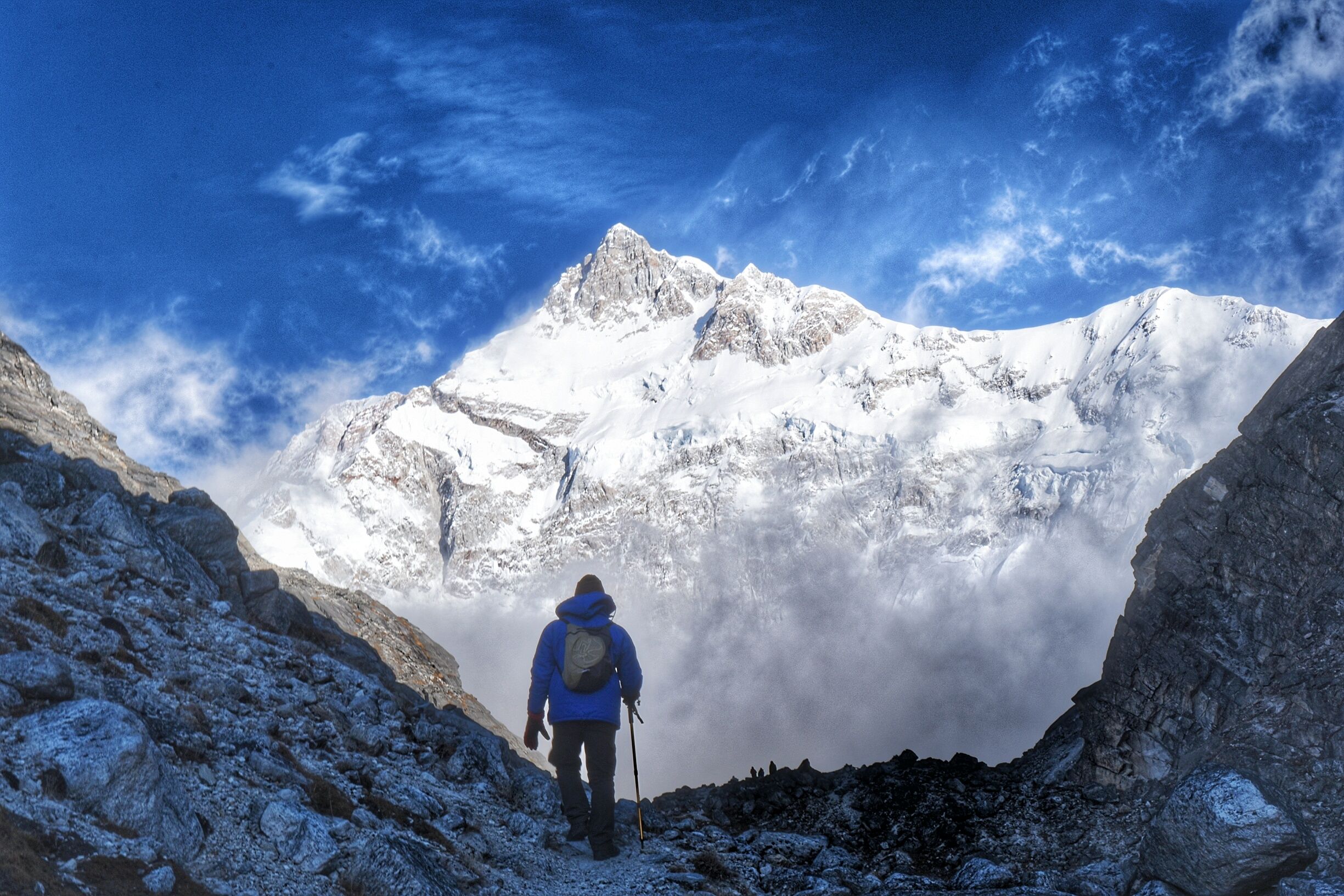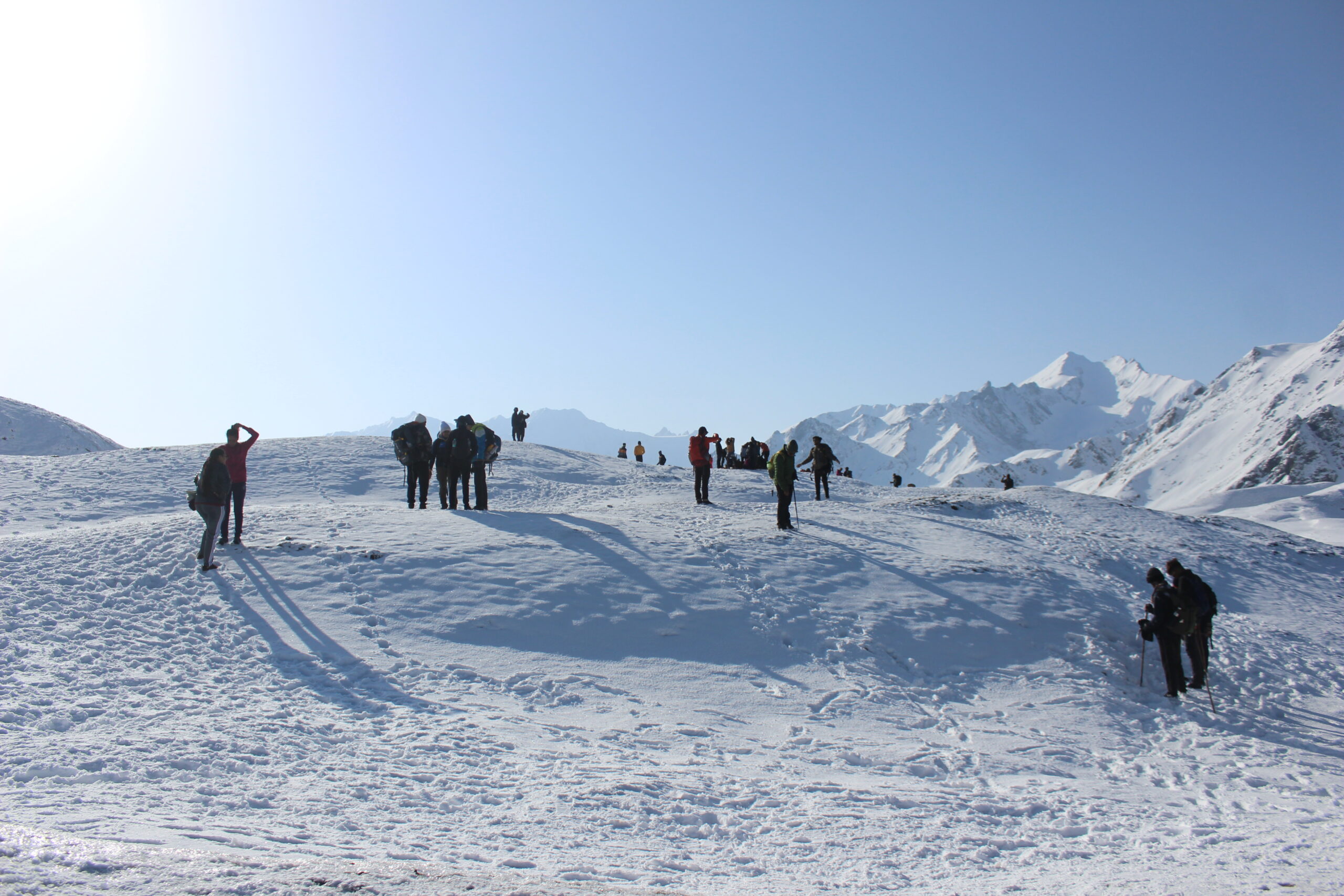The Great Himalayan National Park: A Trekker’s Paradise
The Great Himalayan National Park is a protected area that spans approximately 1,171 square kilometres and can be found in the state of Himachal Pradesh in India. It is also known as the Great Himalayan Biosphere Reserve. The park is well known for the wide variety of flora and fauna that it contains, as well as its breath-taking landscapes and challenging hiking trails. It can be found in the Kullu district of Himachal Pradesh. Due to the park’s exceptional variety of plant and animal life, UNESCO has designated it a World Heritage Site.
The Great Himalayan National Park is home to a diverse collection of plant and animal species, some of which are so uncommon that they are threatened with extinction. The park is located in the western part of the Himalayas, and it spans an elevation range that goes all the way up to 6,100 metres above sea level. Its highest point is 1,300 metres above sea level. This varied topography creates the perfect environment for a wide variety of plant and animal species to thrive, including those that live in alpine forests, alpine meadows, and glaciers.
Flora and Fauna:
The Great Himalayan National Park is well-known for the wide variety of plant and animal life that can be found there. The park is home to over 375 different plant species, some of which can be found in the rhododendron, oak, and coniferous forests that are found there. Additionally, the park is well-known for its medicinal plants, and it is estimated that approximately 35 percent of the plant species that can be found there have some sort of therapeutic value.
In addition, the park is home to over 31 different kinds of mammalian species, some of which include the snow leopard, Himalayan black bear, musk deer, and blue sheep. The Himalayan tahr, the bharal, the serow, the goral, and the langur are some of the other animals that can be found in the park. In addition, the park is home to approximately 209 different species of birds, some of which include the western tragopan, Himalayan monal, koklass pheasant, and Himalayan snowcock.
Trekking:
The Great Himalayan National Park is a favourite destination for people who enjoy hiking and mountain climbing. The park provides hikers with a variety of hiking paths that range in terms of both degree of difficulty and length. The Great Himalayan National Park Trek, the Tirthan Valley Trek, and the Sainj Valley Trek are three of the most well-known itineraries for hikers to take while exploring the park.
The Great Himalayan National Park Trek is the most difficult trek in the park, and because of this, it is only suggested for trekkers with previous hiking experience. The journey is typically completed in between six and eight days and spans a distance of approximately 50 kilometres. This walk will take you through some of the most beautiful parts of the park, including glaciers, dense forests, and alpine meadows.
Information for the Visitor:
Between the months of April and November, guests are welcome to visit the Great Himalayan National Park. The park is closed throughout the winter months because of the significant amount of snowfall. The park office is located in Shamshi, which is approximately 15 kilometres away from Kullu. Visitors can obtain permits to enter the park from the park office there. Each day, the park office will only issue permits for a maximum of two hundred visitors.
Accommodation:
Within and close to the Great Himalayan National Park are a number of hotels and other types of lodging available to visitors. The park authorities are responsible for the upkeep of the forest rest houses and camping areas that are located within the park. In addition, guests have the option of staying in the neighbouring villages of Gushaini and Banjar, each of which features a variety of hotels and homestays.
The Best Time of Year to Visit Is:
Between the months of April and November, the Great Himalayan National Park is at its most beautiful and welcoming. The temperature is usually mild during this time of year, and the park is at its most beautiful. During the monsoon season, which begins in July and continues through September, the park receives a significant amount of rainfall; therefore, hiking is not recommended during this time.
The Great Himalayan National Park is a breathtaking natural wonder that provides visitors with the opportunity to get up close and personal with the majestic Himalayan range. The park is home to a wide variety of flora and fauna, and it features a number of difficult hiking trails that are sure to excite individuals with a passion for outdoor adventuring. In the event that you are searching for an exciting
If you want to have an adventure while being surrounded by stunning natural scenery, the Great Himalayan National Park is the place for you to go. Anyone who enjoys trekking, hiking, or otherwise discovering the natural world should definitely pay it a visit.
Additionally, the park is an important centre for scientific research and conservation efforts that are being carried out. The authorities of the park carry out a number of research initiatives and conservation programmes in order to protect the one-of-a-kind biodiversity that the park is home to. Additionally, the park serves as a significant habitat for a number of species that are currently in danger of extinction, making conservation efforts absolutely necessary for their continued existence.
In addition, the Great Himalayan National Park is an excellent location from which to gain an understanding of the region’s indigenous culture and customs. The park is home to a number of smaller villages, all of which have managed to keep their original way of life intact. Visitors have the opportunity to engage in conversation with locals and gain insight into the traditions, celebrations, and routines of daily life in the area.
The park is a wonderful location for birdwatching, and those who have an interest in birds will be delighted to see the diverse collection of bird species that can be found there. Because the park is home to a number of bird species that are not found anywhere else in the world, it is a one-of-a-kind destination for people who enjoy birdwatching.
The Great Himalayan National Park is a location that should not be skipped by anyone who is interested in discovering the natural splendour of the Himalayas as well as the excitement of going on an exciting adventure. Visitors are sure to take away lifelong memories of the park thanks to the extraordinary combination of natural splendor, exciting activities, and educational opportunities it provides. Anyone who is looking for a place to get away from the hustle and bustle of city life will find that this particular location is sure to meet their expectations and exceed their expectations in every way.
In the Great Himalayan National Park, some of the most well-liked things to do include going on treks and hikes, setting up camp, watching birds and other wildlife, and camping out. The following is a list of the park’s most popular attractions that you can check out during your time there:
Trekking and Hiking: The Great Himalayan National Park is a favourite destination for outdoor adventurers who enjoy going on treks and hiking trips. There are many different hiking trails that can be taken that provide breathtaking vistas of the mountains and valleys in the area. The Tirthan Valley Trek, the Sainj Valley Trek, and the Parvati Valley Trek are three of the most well-known itineraries for trekkers.
Camping is yet another well-liked pastime that can be done in the park and is available for visitors to enjoy. The park contains a number of camping areas, each of which provides visitors with the opportunity to enjoy the one-of-a-kind adventure of spending the night in the midst of nature. You also have the option of purchasing packages that include hiking and camping, which are provided by a number of different tour operators in the region.
Observing Rare and Endangered Species of Animals: The Great Himalayan National Park is home to a number of rare and endangered animal species. The park is an excellent location for spotting wildlife, including the snow leopard, the Himalayan black bear, the bharal, the musk deer, and a variety of bird species. You have the option of participating in wildlife safaris as well as guided tours, both of which are provided by the park authorities as well as tour operators in the surrounding area.
Birdwatching is a popular activity in this park, which attracts a wide variety of avian visitors and provides excellent opportunities to view a variety of bird species. In addition to the Himalayan Monal and the Khalij Pheasant, the Western Tragopan, the Koklass Pheasant, and the Khalij Pheasant are some of the more well-known bird species that can be seen in the park.
Experiences of a Cultural Nature: The Great Himalayan National Park is also an excellent location from which to study the customs and manners of the people who live in the area. The park is home to a number of smaller villages, all of which have managed to keep their original way of life intact. You will have the opportunity to engage in conversation with the locals and gain insight into their traditions, celebrations, and way of life.
The Great Himalayan National Park is open throughout the year, but the months of April through June and September through November are the most ideal times to go because the climate is mild and the skies are clear during those months. During the winter months, the park receives significant amounts of snowfall, which prompts the park authorities to close the park for the sake of visitor safety.
The Great Himalayan National Park is an area that every person who appreciates nature ought to put on their list of places to visit before they die. It is a destination that provides guests with a one-of-a-kind blend of natural beauty, opportunities for exciting adventure, and rich cultural experiences that are sure to leave an indelible mark on them. A trip to the park is an adventure that will bring you closer to nature and leave you feeling revitalised and refreshed after you return home from your time there.
You will find the following additional information about the Great Himalayan National Park to be helpful when making plans for your trip:
Location: The Great Himalayan National Park can be found in the Kullu district of Himachal Pradesh in the Indian state of Himachal Pradesh. The park encompasses a total area of 1,171 square kilometres and is located at an elevation that varies from 1,500 metres to 6,000 metres above mean sea level.
The Bhuntar Airport in Kullu, which is approximately 50 kilometres away from the park, is the airport that is located in the closest proximity to it. In addition, Kullu is home to the closest train station, which boasts excellent connections to a number of India’s most important urban centres. Road travel is another option for getting to the park from Delhi, which is approximately 550 kilometres away.
The authorities of the park require visitors to pay an entrance fee and obtain permits before allowing them to enter the park. The park office in Shamshi or the Forest Range Office in Sainj are the two locations where one can obtain the necessary permits. The entrance fee is 50 INR for people coming from India, while it is 200 INR for people coming from other countries. Camping and hiking are both activities that incur additional costs.
The Great Himalayan National Park and its surrounding areas offer visitors a diverse selection of possible lodgings, both inside and outside the park. Within the boundaries of the park, the park authorities maintain a number of forest rest houses as well as camping areas that can be reserved in advance. In addition, both Kullu and Manali are home to a diverse range of hotels and resorts, from those catering to budget travelers to those catering to those looking for the height of luxury.
A few helpful hints for guests:
Because there is no telling what the weather will be like, it is best to come prepared with both warm clothing and rain gear.
Due to the limited availability of food and water within the park, visitors are advised to bring sufficient supplies of both of these necessities with them.
Visitors to the park should not litter and should take care not to cause any harm to the park’s native habitat or its diverse animal population.
Because there are not many medical facilities within the park, it is recommended that visitors bring a first aid kit along with any necessary medications.
In conclusion, the Great Himalayan National Park is a location that provides visitors with a one-of-a-kind opportunity to experience the excitement of adventure while also discovering the natural splendour of the Himalayas. It is a place that is sure to leave a lasting impression on visitors and is a must-visit destination for anyone who is looking for a break from the hustle and bustle of the city. For nature lovers, adventure enthusiasts, and anyone who is looking for a break from the hustle and bustle of the city, this is the place to go. Prepare yourself for the experience of a lifetime by making plans to visit the Great Himalayan National Park as soon as you can.






